
 |
 |
 |
 |
 |
 |
 |
email: roadarch@outlook.com |
 |
| Palace Depression |
(hit "refresh" to get the most recent version of this page; click on photos for larger images)
| Daynor at center, Ticket Booth at right (1930s?) | Another view with Daynor at center |
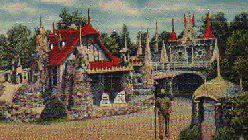 |
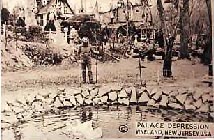 |
| The Excavation in 2003 (Ticket Booth in background) |
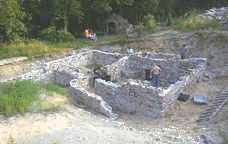 |
| Progress in 2003 | ||
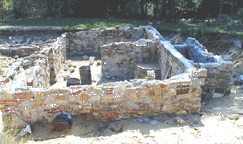 |
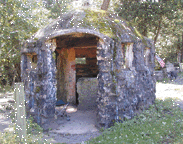 |
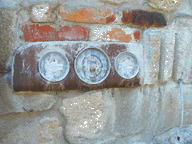 |
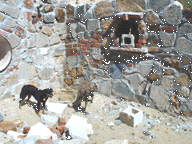 |
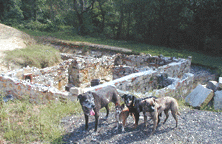 |
| In 2004 | |
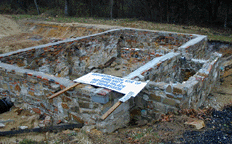 |
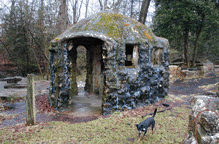 |
| In 2006 | ||
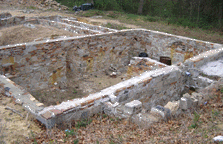 |
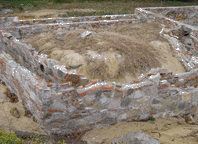 |
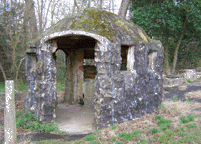 |
| In 2007 | ||
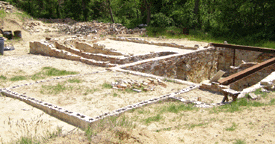 |
 |
 |
| In 2009 | |
 |
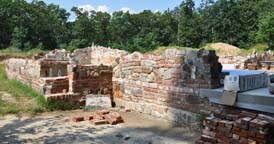 |
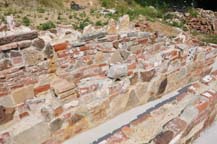 |
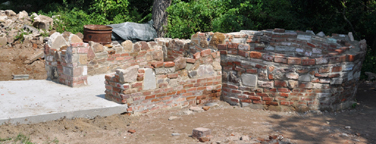 |
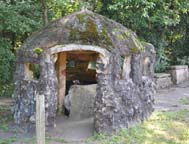 |
 |
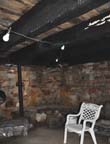 |
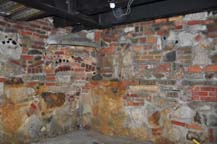 |
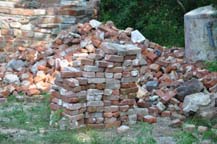 |
 |
 |
| 2012: | |
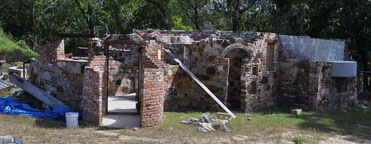 |
 |
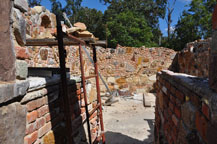 |
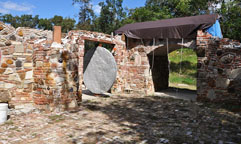 |
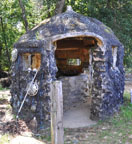 |
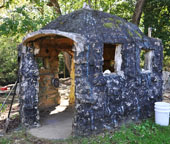 |
|
George Daynor began building a house on this property in Vineland, NJ in 1929. He used the objects he found on site which was a former car junkyard. His construction became the Palace Depression. The building included secret passageways, cellars, gables, minarets and spires. There was also a wishing well where you could have a 10 pound bowling ball lowered onto your head to wipe out bad memories.
He completed his castle and opened it, free of charge, to the public in 1932. It became a popular stop-over for tourists en route to Atlantic City. Daynor described his creation as "the greatest idea of originality ever conceived in the history of the world by one man with his two hands." Daynor was a bit strange himself. He lived inside an old car on the site for 3 years while he drained the swamp and built the Palace. He had a long beard and shoulder length red hair which he held back with bobby pins. He also wore lipstick and rouge. He liked to dress as a prospector when giving tours of his Palace. Sometimes, he wore striped pants with spats, a swallow-tailed coat and formal shirt and bowtie. Only recently was it discovered that Daynor did not live alone or build the house entirely by himself. He concealed the fact well that he had a wife. Florence Daynor, who died in 1983, took an active role in the construction of the Palace for 26 years until 1955 when she left him. In 1956, at the age of 81, Daynor got involved in a kidnapping case, claiming the kidnappers had contacted him about hiding the child at the Palace. The publicity stunt and landed him in jail for a year for fraud. Vandals badly damaged and burned the Palace during that time. Daynor returned from prison in bad health and was hospitalized in 1961 for malnutrition. He died three years later and was buried in Potter's Field. Although Daynor believed his structure would stand for a hundred years or more, by the 1940s it had already begun to deteriorate. Daynor could not keep up with maintaining and protecting it from vandals. A local high school art teacher tried to save it in the 1960s. However, the property was purchased by the City and it was razed in 1969 to make way for a park. The only remaining structure is the round ticket booth which was made of rusted fenders and the hoods of old cars. In the 1970s, restoration plans were abandoned due to lack of funds. The Palace of Depression Restoration Association, led by Kevin Kirchner, unearthed many of the original foundations, tunnels and basements under about five feet of fill-in dirt. Restoration began around 2002 using donated and leftover materials from construction sites. Most of the original structure will be rebuilt. Jeff Tirante, shown in the bottom row of 2009 photos above, did extensive research to create a model for use in the reconstruction. In 2004, vandals damaged a wall and details, setting back reconstruction efforts a couple months. In 2009, the basement level was nearly complete and Kevin and Jeff were working on the ground floor. By 2012, the walls on the ground floor were nearly complete. Volunteers are welcome. |
| Special Places Main Page |
| RoadsideArchitecture.com |
Copyright. All photos at this website are copyrighted and may only be used with my consent. This includes posting them at Facebook, Pinterest, blogs, other websites, personal use, etc. Tips & Updates. If you have suggestions about places that I haven't covered, historical info, or updates about places/things that have been remodeled or removed, I'd love to hear from you: roadarch@outlook.com. |